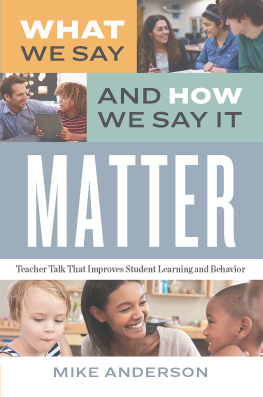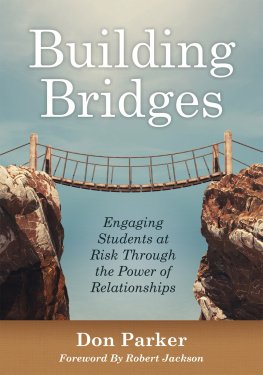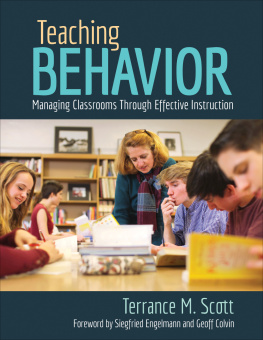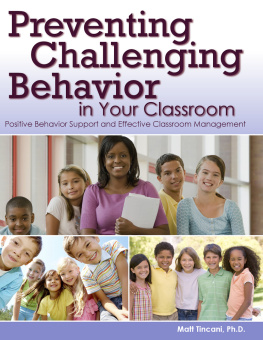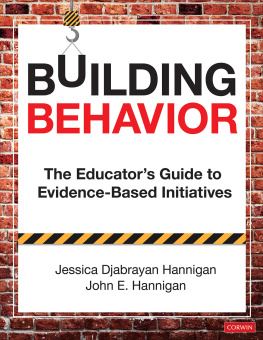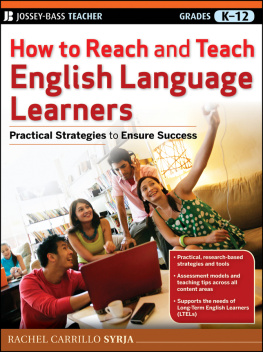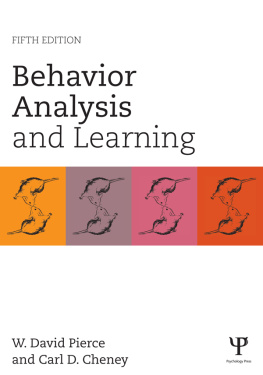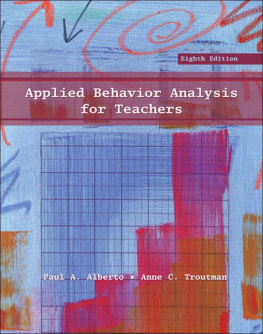The Behavior Code needs to be read by all teachers, counselors, administrators, and parents! The message is simple: our students challenging behaviors will continue if we only use punishments or rewards. Our job as caregivers is to understand our students dilemmas and teach them better coping strategies. The authors do not shy away from difficult topics, such as the students who say, I dont care, or who demonstrate sexualized behavior. This book is complete with supportive advice for teachers dealing with the challenging student and worksheets for organizing ones own teaching around the FAIR Plan thoroughly described in this book. Waste no more time spinning your wheels with challenging students; allow yourself to be guided by the interventions articulated so well in the pages of this book.
Michelle Garcia Winner, founder, Social Thinking
The Behavior Code is filled with wise and very concrete suggestions for K6 educators and school counselors. This book insightfully illuminates the nature of anxious, oppositional, withdrawn, and overly sexualized behaviors. And it provides detailed, helpful suggestions that support school personnel anticipating and addressing these kind of challengingand often, overwhelmingbehaviors.
Jonathan Cohen, president, National School Climate Center, coauthor of Educating Minds and Hearts Because the Three Rs Are Not Enough, and adjunct professor in psychology and education, Teachers College, Columbia University
A practical guide that will help teachers understand and improve their students behavior and reduce the stress on everyone. This book is useful for experienced teachers and a great introduction for the student teacher or new school consultant. I was especially impressed by the originality and creativity of the materials provided and the many sample recommendations.
Michael Jellinek, MD, chief of child psychiatry service, Massachusetts General Hospital, and professor of psychiatry and pediatrics, Harvard Medical School
Teachers and school mental health consultants will find this book a major resource; its eminently instructive and practical in guiding their work with students who have emotional and/or behavioral problems. The very experienced authors combine functional behavioral analysis with an in-depth understanding about four common types of challenging students, and provide a wealth of strategies for optimally changing, teaching, and interacting with such children.
Richard E. Mattison, MD, director of school consultation and professor of psychiatry, Stony Brook University School of Medicine
The Behavior Code presents a cogent, succinct, highly readable support system for teachers, behavior specialists, and site administrators. Authors Rappaport and Minahan employ the process of Antecedent/Behavior/Consequence data collection coupled with case studies to illustrate its practicality and application. The manual is highly useful for staff professional development related to student behavior support plans and behavior intervention plans, both of which support improved student learning.
Leslie M. Codianne, associate superintendent of student support services, Monterey Peninsula Unified School District
The Behavior Code
The Behavior Code
A Practical Guide to Understanding and Teaching the Most Challenging Students
JESSICA MINAHAN
NANCY RAPPAPORT, MD

Copyright 2012 by the President and Fellows of Harvard College
All rights reserved. No part of this publication may be reproduced or transmitted in any form or by any means, electronic or mechanical, including photocopy, recording, or any information storage and retrieval systems, without permission in writing from the publisher.
Library of Congress Control Number 2011941943
Paperback ISBN: 978-1-61250-136-9
Library Edition ISBN: 978-1-61250-137-6
ISBN (epub edition): 978-1-61250-268-7
Published by Harvard Education Press,
an imprint of the Harvard Education Publishing Group
Harvard Education Press
8 Story Street
Cambridge, MA 02138
Cover Design: Sarah Henderson
Cover Photo: Jaime Monfort/Getty Images
The typefaces used in this book are Minion and Myriad Pro.
Contents
CHAPTER 1 Breaking the Code
What Teachers Need to Know About Behavior
CHAPTER 2 The FAIR Plan
Putting the FAIR Plan into Practice
CHAPTER 3 Get Away from Me!
The Student with Anxiety-Related Behavior
CHAPTER 4 Youre Not the Boss of Me!
The Student with Oppositional Behavior
CHAPTER 5 I Dont Care
The Student with Withdrawn Behavior
CHAPTER 6 I Didnt Mean To...
The Student with Sexualized Behavior
CHAPTER 7 Commonly Asked Questions
Some Answers, and a Challenge
Introduction
About 10 percent of the school populationor 9 to 13 million childrenstruggle with mental health problems. In a typical classroom of twenty, chances are good that one or two students are dealing with serious psychosocial stressors relating to poverty, domestic violence, abuse and neglect, or a psychiatric disorder. There is also growing evidence that the number of children suffering the effects of trauma and those with autism-related social deficits is also on the rise.
These children represent the most challenging students in our classrooms today. Their mental health problems make it difficult for them to regulate their emotions and focus on learning. Most of the time, they lack basic skills necessary to regulate their behaviors and, sometimes, to even recognize their own actions. They can be inflexible and have outbursts for no apparent reasondisrupting the classroom routine daily. They can disengage socially or be clingy, sleepy, or irritable. They can defy school personnel repeatedly and argue incessantly. Sometimesalthough more rarelythey make sexual gestures and exhibit other forms of sexually inappropriate behavior. They are the students who keep administrators up at night and the ones teachers fear and even dread having in their classes. Many of their stories are heartbreaking.
Despite their best efforts, school providers do not always do a good job with these students. Children with behavioral challenges often fail in school, waste too much time in detentions and suspensions, fall years behind in academics, and never master the skills they need to make adequate progress. Although schools have become a major site for students to receive mental health interventions over the past thirty years, school programs are still relatively fragmented. Counselors and teachers lack adequate time and resources to provide evidence-based curricula and classroom strategies that, when consistently delivered, can change students behavior. School psychologists are often relegated to testing students, creating individual education programs (IEPs), and dealing with bureaucratic demands of students in special education. School counselors have a high caseload and must devote the majority of their time to students categorized with the most severe emotional and behavioral disturbances. One result is that disruptive students are frequently referred for psychiatric medication before comprehensive and effective behavioral plans have been attempted.
Teachers are often ill equipped to respond to students challenging behaviors. These educators receive minimal training in child and adolescent mental health issues or to develop interventions that can help reduce behavioral incidents and increase access to the curriculum. The usual methods, such as sticker charts with an emphasis on students performance to gain rewards, or sending the students to the principals office, usually fall flat with these students.
Next page

